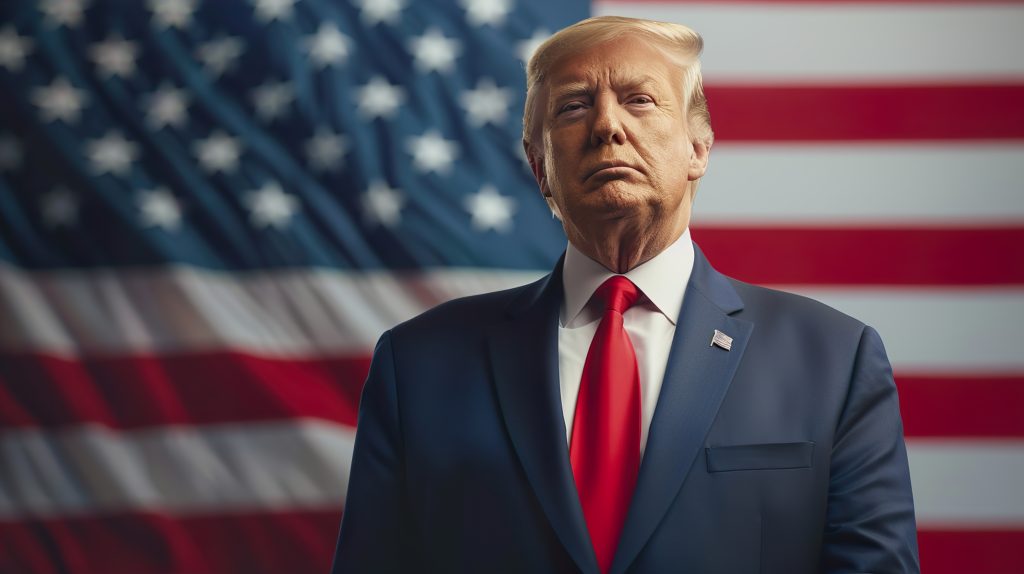The “Golden Dome for America” is a missile defense initiative introduced by President Trump to safeguard the U.S. from global threats. However, it comes with a hefty price tag and has faced criticism, particularly from China, which warns that it could escalate the militarization of space and trigger a worldwide arms race.

On May 20, 2025, Trump unveiled the details of the system, declaring that his administration had chosen the design for this “cutting-edge” defense system. The proposed project could cost several hundred billion dollars and marks a historic first by deploying U.S. weaponry in space.
What is the Golden Dome and How Does It Work?
The Golden Dome is a layered missile defense system that aims to protect the U.S. from missile threats originating from anywhere on the globe, including space. In a statement made in the Oval Office, alongside Defense Secretary Pete Hegseth, Trump explained that the defense system would use “next-generation technologies” across land, sea, and space, integrating space-based sensors and interceptors.
The system is designed to detect and neutralize missiles even before they launch, intercept them during flight, intercept them mid-course, or stop them in the final moments before they reach their target. The defense strategy will include multiple layers of protection: a domain awareness layer for tracking threats, an ICBM (intercontinental ballistic missile) defeat layer, and an air layer to protect against cruise missiles and other aerial dangers.
According to retired General Frank McKenzie, an early interception is the most effective way to neutralize a missile. Early in its flight, a missile follows a predictable trajectory and cannot maneuver, which makes it an optimal time for interception. He suggested that this strategy would likely require a space-based system, which is technologically feasible.
The Golden Dome initiative is designed to be robust and scientifically grounded, as explained by missile defense expert Tom Karako, and will be underpinned by extensive planning and engineering.
Estimated Costs of the Golden Dome
The Golden Dome will be an expansive project, involving multiple defense and technology companies and being developed in various U.S. states such as Florida, Georgia, Indiana, and Alaska. The Congressional Budget Office estimates the cost of the space-based components alone at $542 billion.
General McKenzie acknowledged the steep cost but emphasized that the defense of the U.S. against missile threats from countries like North Korea, Iran, or Pakistan would justify the investment. Lockheed Martin, a major aerospace and defense company, has expressed its support for the project, describing it as a “revolutionary concept” akin to the scale of the Manhattan Project.
Although U.S. Space Force General Michael Guetlein is tasked with overseeing the project, there is currently no funding allocated to the Golden Dome, and the plan is still in the early stages of development, according to Air Force Secretary Troy Meink.
Inspiration from Israel’s Iron Dome
The Golden Dome concept draws inspiration from Israel’s Iron Dome, a defense system deployed in 2011 to protect against incoming rockets. While the Iron Dome is primarily focused on short-range threats, it has intercepted thousands of rockets with a success rate of over 90%. Trump highlighted the Iron Dome during his March 2025 joint address to Congress as an example for the U.S. to follow in developing its own system.
China’s Response to the Golden Dome
China has voiced its concerns over the Golden Dome project, urging the U.S. to abandon the idea of a global missile defense system. A Chinese spokesperson argued that such a system would undermine global security, disrupt the strategic balance, and increase the risk of space militarization, which could lead to an arms race.
Retired General Frank McKenzie countered by pointing out that China has been significantly involved in militarizing space itself. He defended the Golden Dome as a defensive measure aimed at protecting the U.S., not as an offensive weapon.
Both China and Russia have raised alarms about the Golden Dome’s potential destabilizing effects, especially as both countries have been rapidly advancing their missile technologies. The two nations have also voiced concerns about the risk of turning space into a battlefield.
The Golden Dome represents a shift in U.S. missile defense strategy, with an emphasis on countering advanced missile threats from China and Russia. While there are concerns about its costs and global repercussions, many experts argue that the project’s long-term value in safeguarding the U.S. from missile attacks makes it a worthwhile pursuit. However, whether it will trigger an arms race or provoke other nations to develop countermeasures remains an open question.



